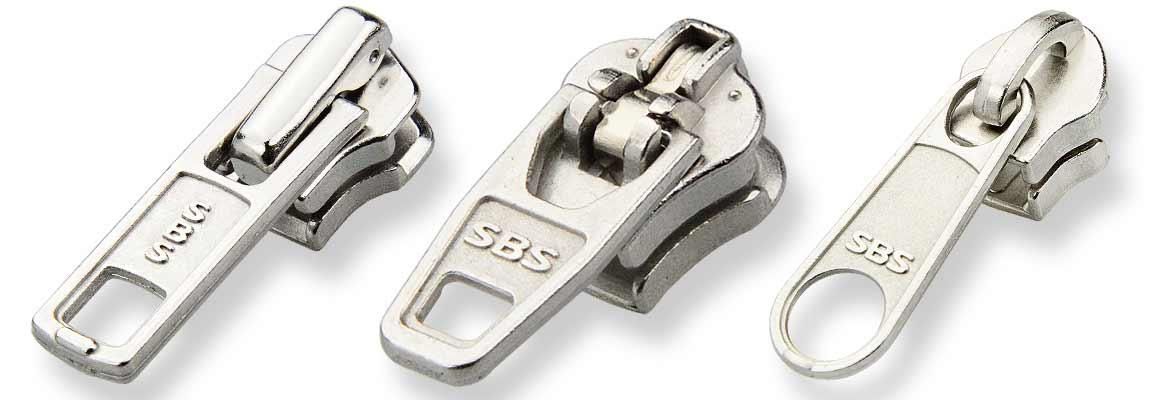You should be very careful while purchasing zipper sliders, because unless they are attached to the correct items, proper functioning is difficult. It is important that you should gain a thorough understanding so as to select the sliders that suffice your requirement.
The slider is a component that joins/separates a zipper when it is moved up/down along the chain.
Zipper sliders can be classified into various types, based on the types of zippers, namely, nylon sliders, metal sliders and plastic sliders, which differ from each other. Sliders installed on nylon zippers feature asymmetrical top and bottom sides, with the top side more flat than the bottom side, while sliders used for metal and plastic zippers share symmetrical top and bottom sides. Learn more.
Apart from the classification based on the types of zippers, sliders can also be differentiated according to the functioning of the locking system. They work the best on the items appropriate for their functioning.
Locking is where the slider remains stagnant, without moving up and down the chain unexpectedly. Generally, zipper sliders can be seen in the following categories based on the locking mechanism:
* Auto-lock sliders
* Semi-auto lock sliders
* Non-lock sliders
Auto lock sliders are those that will not move unless there is an external force on their pull tabs. On the other hand, non lock sliders are those that will unfasten even if slight force is applied on any slider part or even when the teeth are being pulled apart. Semi auto lock sliders follow a simple mechanism wherein the locking and unlocking of the sliders depend on the movement of the pull tabs.
Below is a brief list of the application of different types of zipper sliders based on the locking mechanism.
Auto-lock sliders: garments, sportswear, outerwear, jackets, skirts, dresses, etc.
Non-lock sliders: bags, handbags, luggage, tents, bed covers, etc.
Semi-auto lock sliders: jeans and pants
References:
1. Sbszipper.com
2. Wikipedia.com










Comments